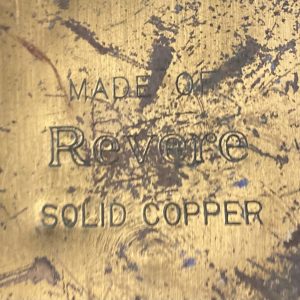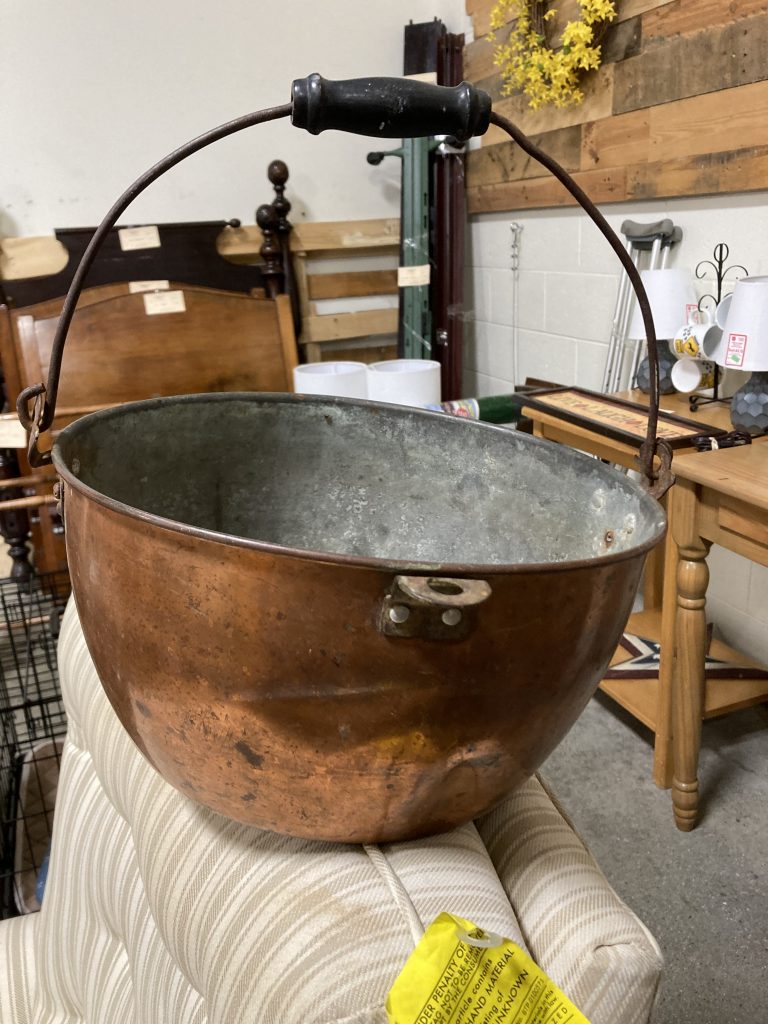Reader Ellen asks:
“Hello!” I purchased a small old-style fry pan in an “antique” store. There is no copper on the bottom. Unfortunately, my husband decided to use it – on high – and seared grease into it!
I have tried Brillo/SOS; baking soda; soaking. What will get this grease sear off?
“Thank You!”
In terms of burnt on grease, what I’ve used for grease splatters on the outside of tea kettles is to put some water in it, heat it up (to make the grease stains hot) and then use some Bar Keepers Friend (a fine polishing powder) to polish them away.
Dealing with burnt on grease on the inside of a probably poses more difficulty because it isn’t a finely polishes surface like the outside; It may have started that way, but years of metal utensils and acidic foods can leave the inside of the pan with many pits and grooves for the grease hid in. Still, the same trick may work, with a little more elbow grease.
My recommendation is to heat the pan slightly, and then give it a good scrubbing with a green Scotch Brite pad and some soap and water. Then heat it up again and give it a good polishing with Bar Keepers Friend. If this doesn’t get all the grease stains off, repeat as often as necessary.
The only thing to watch out for is, with a heated pan, don’t douse it with cold water as you will risk warping it. Better to heat the pan mildly and use some warm water for the soap and water part, and any rinsing.


